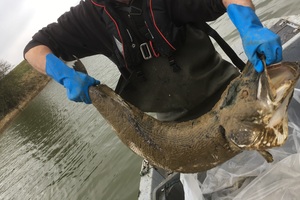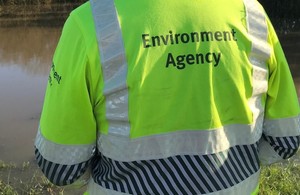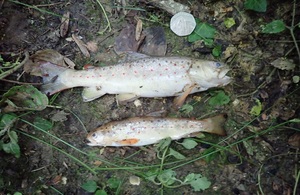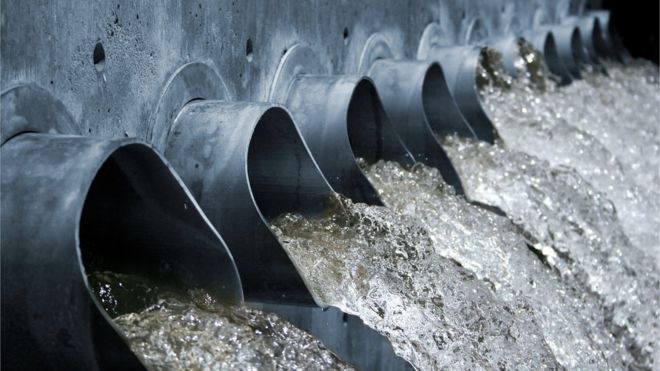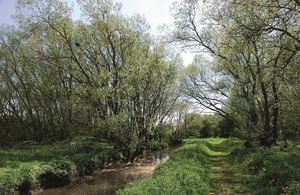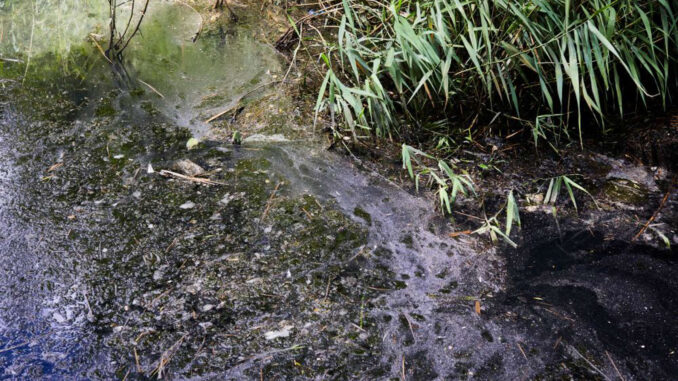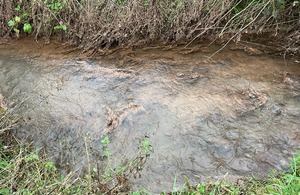A faulty pipe leaked deadly fertiliser into River Witham, stretching 46km in ‘one of the largest environmental incidents ever recorded in Lincolnshire’.
In a prosecution brought by the Environment Agency, Lincolnshire firm OMEX Agriculture Ltd – which leaked liquid fertiliser into the River Witham, wiping out more than 135,000 fish – has been ordered to pay a total of £510,190.
The pollution – which stretched 46km to The Wash at Boston – is thought to be one of ‘the largest environmental incidents ever recorded in Lincolnshire’.
Failure of an overground pipe caused the spill, which devastated nearby rivers and surrounding woodland. Impact from the pollution destroyed all invertebrates in the river’s tributaries for more than 23km downstream of the site.
Immediately after the pollution, the Environment Agency and partners worked ‘tirelessly’ to mitigate the impacts. They restocked the river with more than 1.5 million fish larvae and 70,000 roach and bream.
And they continue to work closely with East Lindsey District Council and the Forestry Commission to remedy affected woodland.
Whilst the water quality of the River Witham improved within a few days, it could take years for the fisheries to recover, the court heard.
OMEX Agriculture Ltd pleaded guilty on 12 June 2023 to the major category 1 pollution incident at their facility at Bardney Airfield, Tupholme, near Bardney, at Lincolnshire Magistrates. Category 1 is the most severe of three Environment Agency ratings used to grade pollution incidents.
They were ordered to pay a fine of £160,000, ordered to pay costs of £350,000 and a victim surcharge of £190.
District Judge Veits said that the incident ‘was avoidable had proper checks been made’. He added that ‘checks were not clear or well documented’ and that the failures involved were ‘foreseeable’.
He also said there was: ‘clear negligence in not having appropriate checks in place’.
Leigh Edlin, Environment Agency area director for Lincolnshire and Northamptonshire, said:
The pollution of the River Witham by OMEX was a devastating event and one of the largest environmental incidents we have seen in Lincolnshire.
The Environment Agency has worked tirelessly to undo the damage, introducing thousands of fish, and requiring the polluter, OMEX, to repair the damage that was done.
Today marks the end of the legal process and we are rightly pleased with the result in the court. This is one part of a much larger effort, led by the Environment Agency, to ensure the River Witham is restored and that the polluter pays financially and legally.”
OMEX Agriculture Ltd, the global company, which has its headquarters at Lincolnshire, manufacturers liquid chemical fertiliser for the agricultural industry and de-icer products which it ships around the UK and the world.
In March 2018, approximately three million litres of liquid urea ammonium nitrate (UAN) concentrate fertiliser escaped from a storage lagoon into the River Witham and tributaries.
The incident triggered a massive Environment Agency response and investigation, including the launch of the Environment Agency’s marine survey vessel.
Fish density within the River Witham was greatly affected and the population of pike is likely to take years to recover due to the number of adult fish killed.
Around three hectares of woodland with ancient woodland characteristics was also damaged with all the trees in the area having to be felled.
The court heard how OMEX, which stores UAN for production of fertilisers, failed to put in place an appropriate maintenance and inspection regime to avoid the catastrophic pollution.
Fertiliser was held in two sealed ‘bladder’ bag lagoons, both holding the equivalent liquid of three Olympic swimming pools, or 7.5 million litres.
Pipework, operated by an electronic pump system, was used to pump liquid fertiliser from the two lagoons to holding tanks elsewhere on their site. Road tankers were filled from these, they then transported the fertiliser for sale. The pump system was manual until 2017, when it was updated to an automated system by the company’s electrical contractor.
Ultimately, it was the failure of both the overground pipe and an electrical fault that went unnoticed and enabled the pump to continue pumping that led to the devastating discharge.
Environment Agency officers discovered a number of dead fish in the River Witham at Southrey following a report in early March 2018. They traced the pollution upstream via an increasing trail of dead fish and high ammonia readings, eventually identifying the OMEX site as the source and immediately entered the site to report it.
Liquid fertiliser was found ‘gushing’ from the elbow joint of an overground pipe which left the surrounding ground and woodland sodden with pooling liquid fertiliser. The pump was immediately switched off but most of the pollution had already escaped to the river.
On 8 March 2018, a temporary dam built on nearby woodland and the fixing of leaking pipes by OMEX still failed to contain the leak. Saturated ground and contaminated surface water continued to pose a high pollution risk.
It was halted through excavations at source and the fitting of a culvert and concrete pipe to keep contamination away from clean water.
Upstream of Bardney Lock, where the pollution entered the River Witham, in Snakeholme Drain and Scotsgrove Drain, high levels of ammonia remained for months.
The incident was classified as a Category 1 incident under the Environment Agency’s Common Incident Classification Scheme due to its major impact on the environment.
Conservative estimates have the loss of fish life of more than 135,000. Approximately 1 tonne of dead fish was disposed of at a landfill site around a month later. This included roach, bream, perch, as well as large pike, due to spawn.
An independent investigator found the pipework had separated at the leaking elbow joint because it was faulty. The review found that had it been checked when first installed, over 20 years ago, it would have been identified as faulty but no testing had been done. Overground pipework was only checked visually and there were no records of those checks.
There was no routine maintenance of electrical systems and therefore foreseeable electrical faults were not planned for.
In July 2020, OMEX was ordered to carry out river recovery measures set out by the Environment Agency. Under the Environmental Damage (Prevention and Remediation) Regulations 2015, the company has been working to restore the river to its former health.
Fish refuges have been installed across half a dozen locations on the river. OMEX has also created further backwaters along the river, areas where fish have calm and still water to breed and shelter.
The company must assess whether fish populations have recovered, or whether more restocking is required to bring the river back to its former health.
OMEX will be responsible for monitoring and maintaining the improvements for at least the next decade.
Anyone who suspects a pollution incident is urged to report it to the Environment Agency’s incident hotline on 0800 80 70 60.
Background
Omex Agriculture Ltd pleaded guilty to the following charge: On or about the 3 March 2018, you caused a water discharge activity namely the entry of poisonous noxious or polluting matter into inland freshwaters, namely the Scotgrove Drain, Snakeholme Drain, Old River Witham, and River Witham near Bradney in the county of Lincolnshire, otherwise than under and to the extent authorised by an environmental permit.
Contrary to regulations 12 (1) (b)and 38(1) (a) of the Environmental Permitting (England and Wales) Regulations 2016.
The Environment Agency has taken tough action against those companies which break the rules.
Companies were handed record fines last year, making clear that polluters will be made to pay for damage to the environment.
The Environment Agency does not decide the fines handed out to companies and individuals who pollute our rivers. This is down to the courts.
The Environment Agency has significantly driven up monitoring and transparency from water companies in recent years, so that everyone can see what is going on. This includes:
- Event Duration Monitoring: this measures how often and for how long storm overflows are used. The Environment Agency has increased the number of overflows monitored across the network from 800 in 2016 to more than 12,700 in 2021, the equivalent of almost nine in ten storm overflows now with monitoring devices. All 15,000 overflows will have them by the end of 2023. All the data is published online. More info on Event Duration Monitoring can be found here.
- Flow-to-full treatment: The Environment Agency has also asked companies to install new flow monitors on more than 2,000 wastewater treatment works to identify what is happening at those works during the sewage treatment process itself. This has led to a major investigation, announced in November 2021, with the Environment Agency requesting more detailed data from all wastewater treatment works.
- Storm Overflows Taskforce: Through the work of the Storm Overflows Taskforce – made up of Defra, the Environment Agency, Ofwat, Consumer Council for Water, Blueprint for Water and Water UK – water companies have agreed to increase transparency around when and how storm overflows are used:
- make real-time data on sewage discharges available at bathing sites all year round.
- publish annual monitoring data on their websites so that progress in reducing their use can be tracked. The Environment Agency will compile this data into an annual report that is easily accessible to the public. This data is also being used at an operational level to prioritise the most frequent spills for further assessment by EA officers.
The Environment Agency has taken tough action against those companies which are breaking the rules:
- In 2021 the Environment Agency concluded seven prosecutions against water and sewerage companies with fines of £90 million, two of £4 million, £2.3 million, £1.5 million, £150,000, and £540,000. In 2022 nine prosecutions were concluded with fines of £1,600,750, £300,000, £240,000, £233,000, £50,000, and £18,000, £350,000, £871,000 and £536,000.
- The Environment Agency has launched a major investigation into possible unauthorised spills at thousands of sewage treatment works.
- We will always seek to hold those responsible for environmental harm to account.
Source: Environment Agency 13th June 2023

